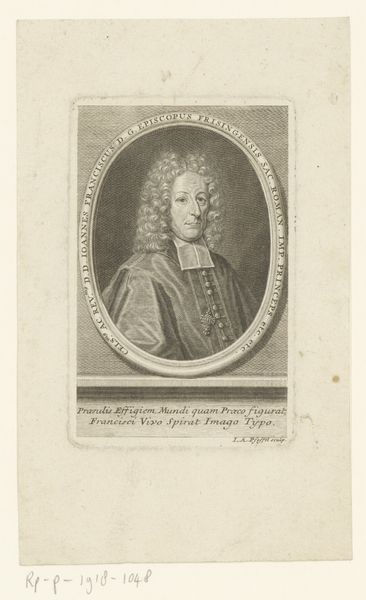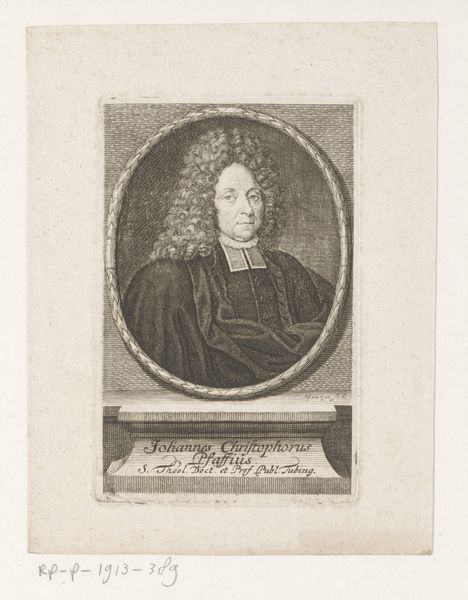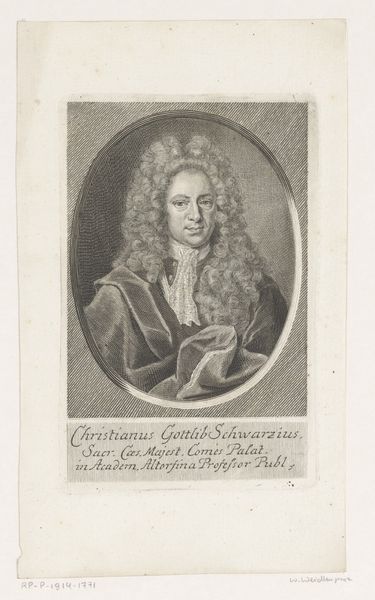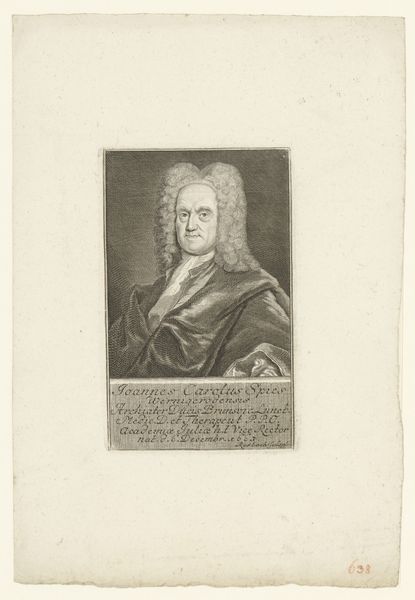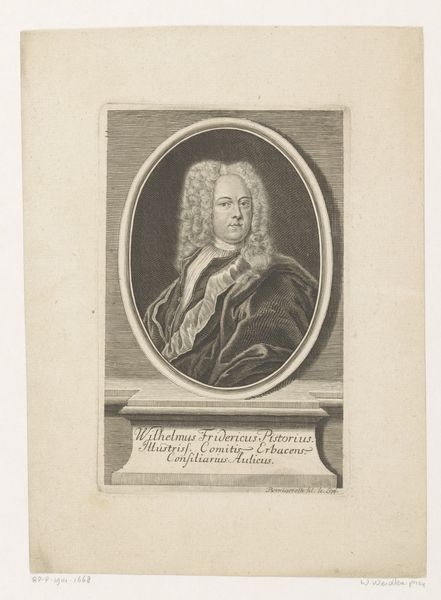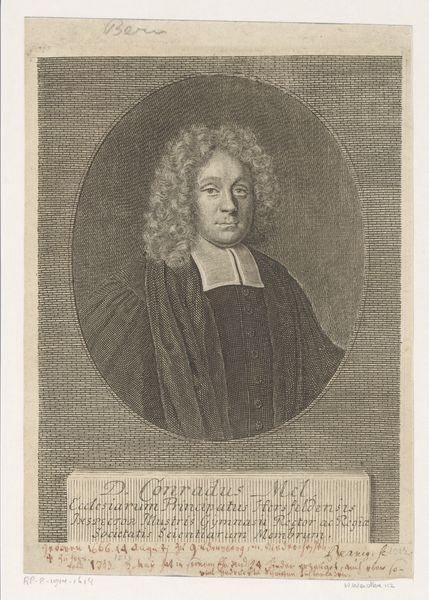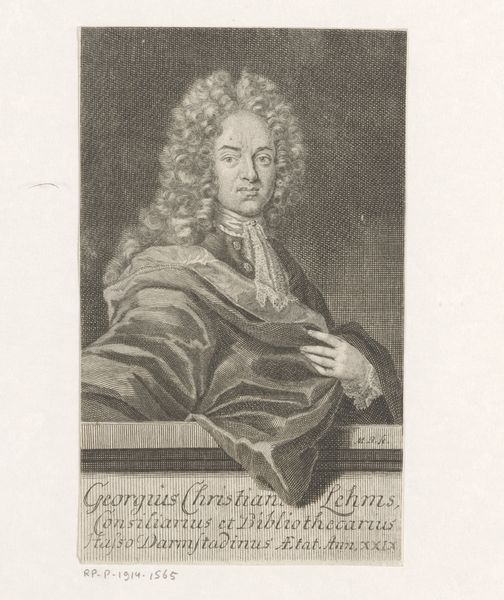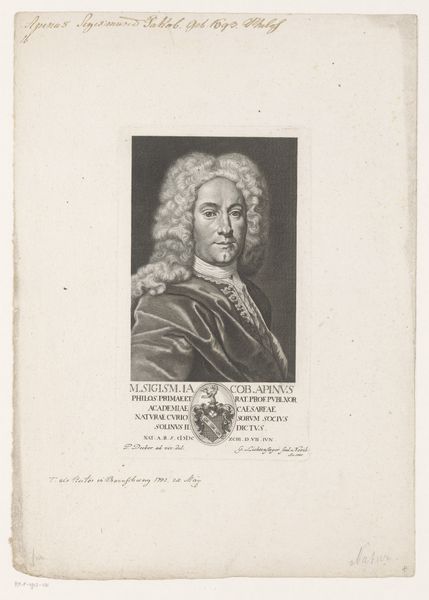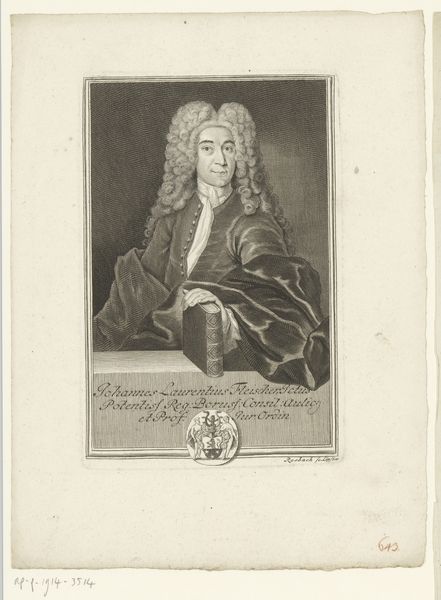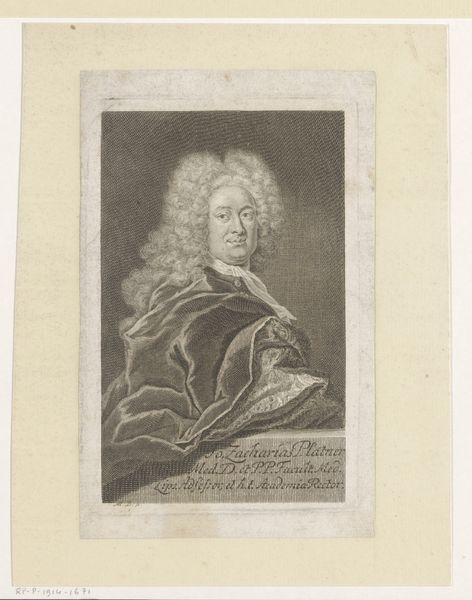
print, engraving
#
portrait
#
baroque
# print
#
history-painting
#
academic-art
#
engraving
Dimensions: height 150 mm, width 99 mm
Copyright: Rijks Museum: Open Domain
Editor: This is a rather formal portrait of Conrad Widow, made sometime between 1705 and 1754 by Christian Fritzsch. It's an engraving, and there's something about the precision of the lines that gives it a real sense of detail. What stands out to you most about this work? Curator: I find myself drawn to the process of its creation. Think of the labor involved in producing this image. An engraving like this required specialized tools, technical skill, and significant time. Each line etched into the plate speaks to the material conditions of its production. Editor: So you’re less interested in the likeness of Conrad Widow and more in…the plate itself? Curator: Not exactly. Consider the role of prints like this in 18th-century society. They weren't just decorations; they were commodities, objects of consumption. Portraits like these circulated widely, disseminating images of power and status to a broad audience. The materiality of the print – the paper, the ink, the very act of reproduction – is crucial to understanding its social function. How were these engravings distributed and by whom? What kind of workshop produced them? Editor: That makes sense. So, beyond being a portrait, it’s also an example of early mass media, in a way? Curator: Precisely. And the shift from unique painting to reproducible print also democratized access to images, challenging existing hierarchies around art and its consumption. We should also ask who Conrad Widow was, what material conditions gave him the leisure and wealth to have his portrait engraved. Editor: That’s a perspective I hadn’t considered before. It reframes the entire image, from a simple depiction to a commentary on production, access, and social status. Curator: Exactly! By focusing on the materiality of the object, we gain insight into the complex networks of labor, consumption, and power that shaped its creation and its reception.
Comments
No comments
Be the first to comment and join the conversation on the ultimate creative platform.
